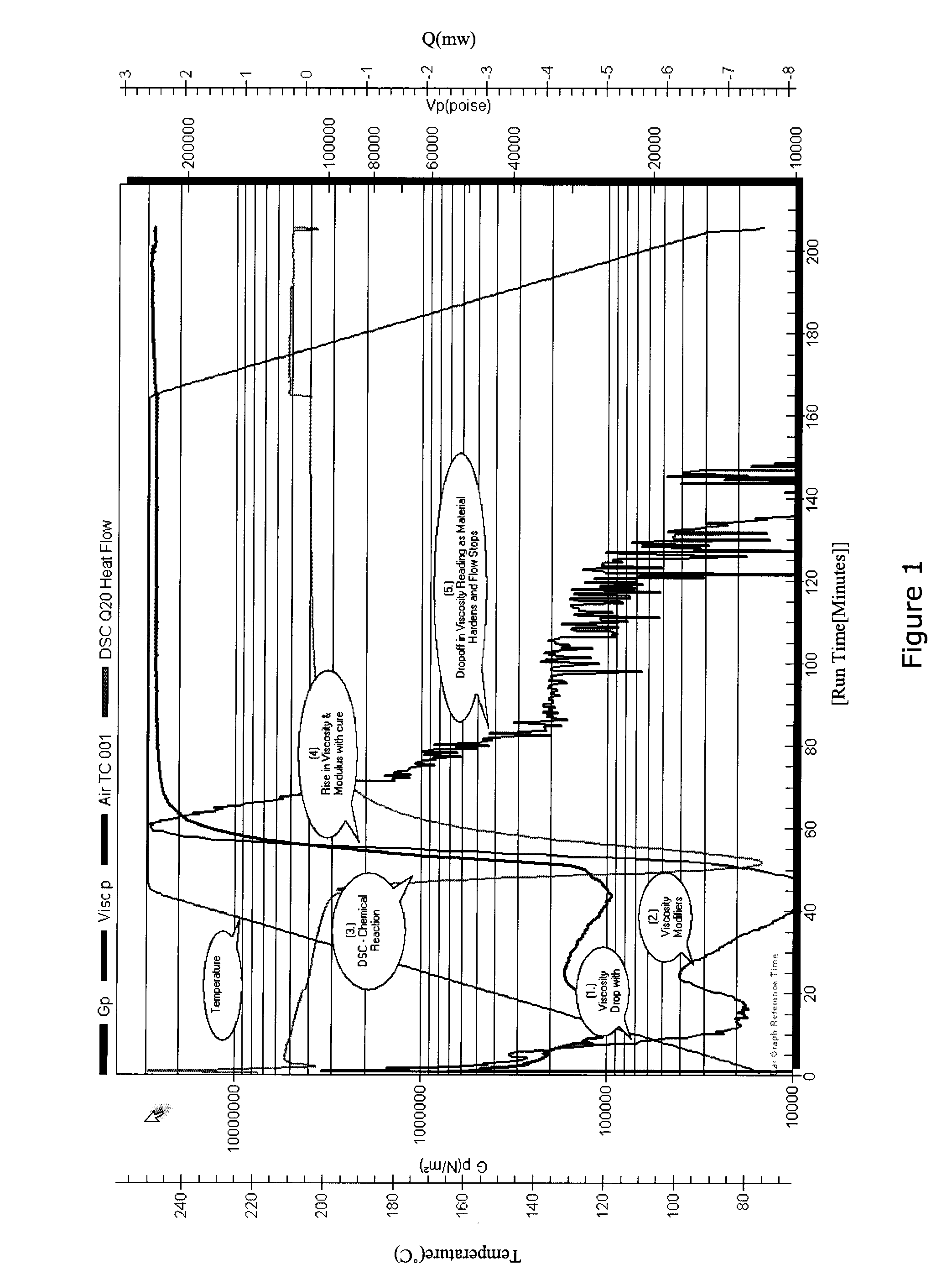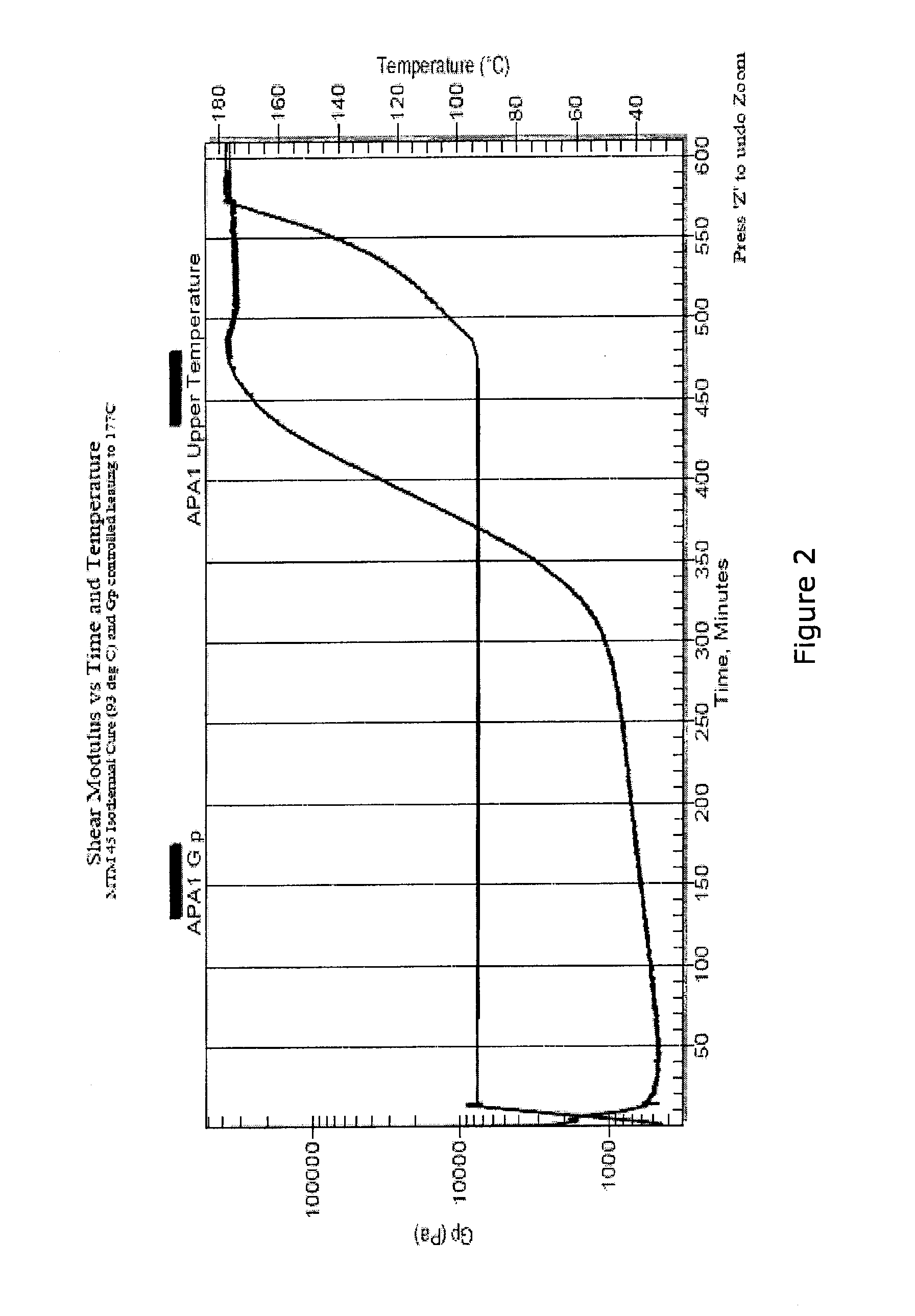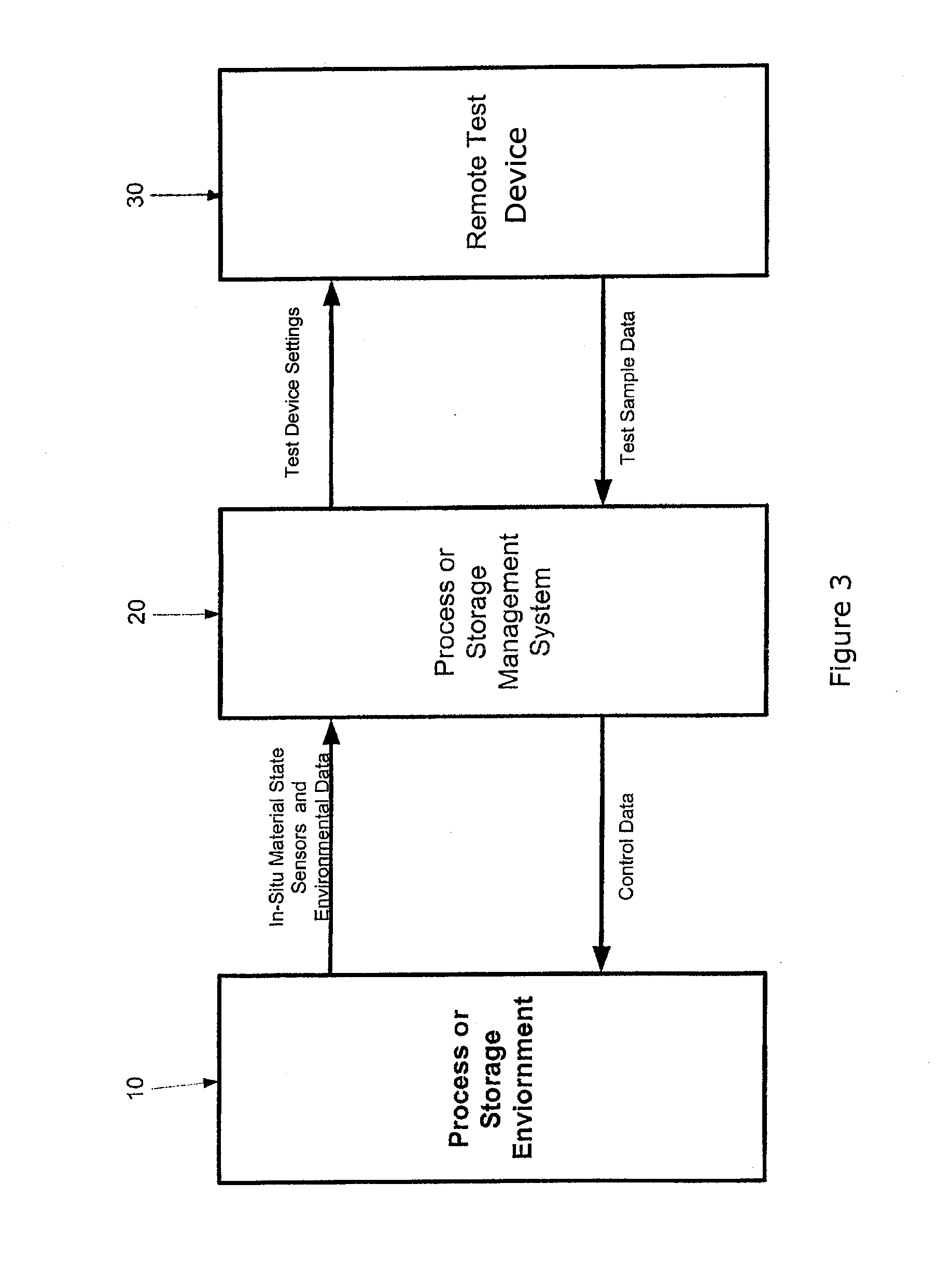System and method for monitoring and controlling production of composite materials
a technology of composite materials and monitoring and control, applied in the direction of material analysis, material heat development, instruments, etc., can solve the problems of insufficient control, insufficient control, and insufficient control of production,
- Summary
- Abstract
- Description
- Claims
- Application Information
AI Technical Summary
Benefits of technology
Problems solved by technology
Method used
Image
Examples
example 1
[0121]FIG. 3 generally identifies the Process or Storage Environment 10, the Process or Storage Management System 20, and the Remote Test Device 30 used in this example. Uncured prepreg (carbon fiber fabric impregnated with an epoxy resin) is placed in an autoclave connected to an autoclave data acquisition system. The autoclave is then set in an idle condition waiting for instructions from the process management system 20.
[0122]A separate test sample of the same lot of material used to make the composite material part is placed in an encapsulated sample rheometer test cell 30 compliant with the ASTM D7750-12 test method. The rheometer is placed in a hold state pending instructions from the process management system 20.
[0123]Processing instructions to manage heat transfer and cure state are loaded into the process management system 20, sometimes referred to as the control system 20, and the process is initiated by the operator. The process management system 20 then instructs the aut...
example 2
[0133]The test sample is prepared and processed as in Example 1 except that rheology data obtained from the remote test device 30 is sent to the process or storage management system 20 which initiates a pressurization cycle in the process or storage environment 10 when the test sample exhibits the viscosity appropriate for pressurization.
[0134]In one embodiment, the data provided and displayed in the graphs would be used to optimize the process cycle in the process or storage environment 10 by providing information on the state of the test sample. For example, the pressurization to consolidate the composite material part in the process or storage environment 10 is begun as the loss modulus value of the test sample in the remote test device 30 passes 1000. This value is chosen because the resin begins to harden and thus will not further soften and allow the resin to escape the laminate.
example 3
[0135]The process is similar to Example 1 or 2 except the composite material part in the process or storage environment 10 is cured at about 137° C. (see FIG. 5). The elastic modulus of the test sample in the remote test device 30 rises to a steady value after approximately fifty minutes. The standard cure cycle requires the composite material part to remain in the oven (the process or storage environment 10) for an additional three hours or almost a factor of six beyond reaching the glass transition state of the cure temperature (e.g., wherein there is no change in the elastic modulus at that temperature for the duration of the cure cycle). Although other factors may require additional cure time, it is evident that it is possible to determine when the modulus has been achieved for the selected cure temperature and thus when the cure cycle can be terminated. In this case, the cure cycle could have been terminated about three hours earlier than the standard cure instructions dictate,...
PUM
| Property | Measurement | Unit |
|---|---|---|
| temperature | aaaaa | aaaaa |
| loss modulus | aaaaa | aaaaa |
| glass transition temperature | aaaaa | aaaaa |
Abstract
Description
Claims
Application Information
 Login to View More
Login to View More - R&D
- Intellectual Property
- Life Sciences
- Materials
- Tech Scout
- Unparalleled Data Quality
- Higher Quality Content
- 60% Fewer Hallucinations
Browse by: Latest US Patents, China's latest patents, Technical Efficacy Thesaurus, Application Domain, Technology Topic, Popular Technical Reports.
© 2025 PatSnap. All rights reserved.Legal|Privacy policy|Modern Slavery Act Transparency Statement|Sitemap|About US| Contact US: help@patsnap.com



